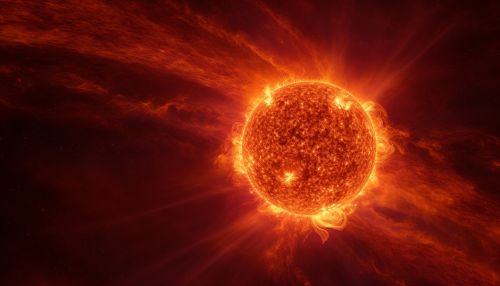Solar Flares
Introduction
Solar flares are sudden and intense variations in brightness that occur on the sun's surface. These flares are a result of the sun's magnetic energy, which can release up to 6 × 10^25 joules of energy. They are our solar system's largest explosive events and are observed in many wavelengths of light.
Formation
Solar flares occur in the solar corona and chromosphere, heating plasma to tens of millions of kelvins and accelerating electrons, protons, and heavier ions to near the speed of light. They produce electromagnetic radiation across the electromagnetic spectrum at all wavelengths, from long-wave radio to the shortest wavelength gamma rays. Most flares occur in active regions around sunspots, where intense magnetic fields penetrate the photosphere to link the corona to the solar interior.


Classification
Solar flares are classified as A, B, C, M, or X according to the peak flux in watts per square meter (W/m^2) of X-rays with wavelengths 100 to 800 picometers, as observed on Earth. Each class has a peak flux ten times greater than the preceding one, with X class flares having a peak flux of order 10^-4 W/m^2. Within a class, there is a linear scale from 1 to 9.n (apart from X), so an X2 flare is twice as powerful as an X1 flare, and is four times more powerful than an M5 flare.
Effects on Earth
Solar flares can have a significant impact on Earth's ionosphere and upper atmosphere, causing disruptions in communication and navigation systems. They can also pose a threat to astronauts and space probes, and some researchers believe they can influence the weather and trigger earthquakes. However, solar flares also lead to beautiful auroras and have been used by scientists to unlock the secrets of our universe.
Observations and Predictions
Observing and predicting solar flares is a crucial aspect of space weather forecasting. Scientists use a variety of ground-based and space-based telescopes and observatories to monitor the sun for signs of solar flares. These observations help scientists understand the complex processes that lead to solar flares and can help predict when and where a flare might occur.
